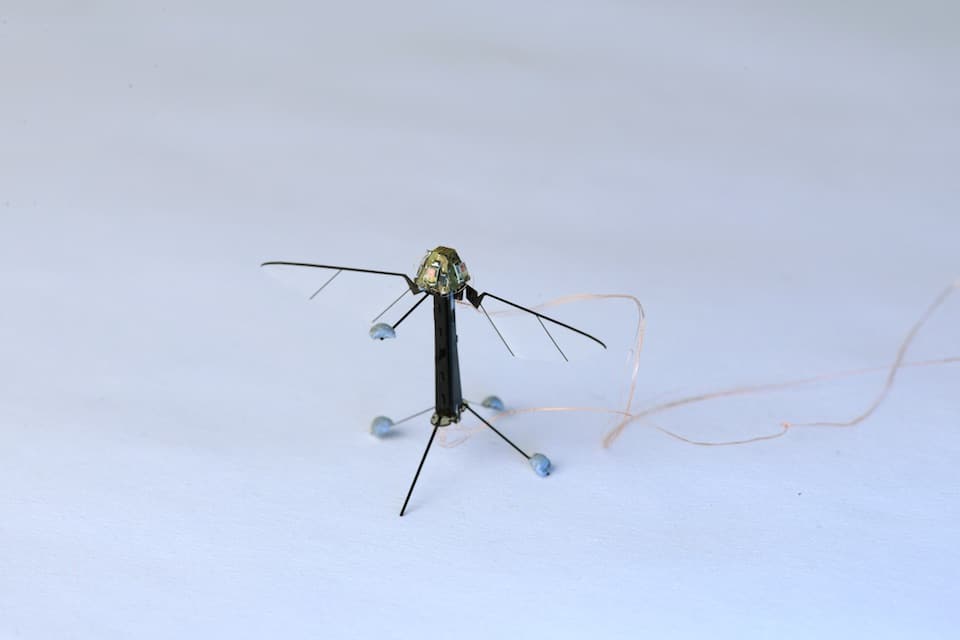Sawyer Buckminster Fuller, Ph.D.
interview by Cathy Carroll | featured photo by OG Photography
Sawyer Buckminster Fuller, an assistant professor of mechanical engineering at the University of Washington, works on a very tiny scale. Fuller creates biologically inspired sensors, control systems, and mechanical designs targeted at insect-sized air and ground vehicles, and studies the flight systems of flying insects. He also developed a frog-hopping robot at the NASA Jet Propulsion Laboratory and invented an ink-jet printer capable of fabricating millimeter-scale 3D metal machines at the MIT Media Lab.
He uses the right side of his brain, too. A Jackson Pollack-esque depiction of the flight paths of flies captured by a multi-camera fly tracker took first prize in the 2008 Art of Science show.
He surfs, prefers riding bicycles to driving cars and admires Buckminster Fuller, the twentieth-century inventor and visionary (and Harvard dropout), but they are not related.

What are the challenges of creating a fully autonomous robot as small as a fly?
It is not enough to simply reduce component size. Many conventional robot and aircraft technologies such as electric motors, GPS sensing, gliding flight, and even general-purpose microprocessors cannot operate efficiently or effectively at insect scale. This is because dominant physical effects change as scale reduces. One way to overcome this is to look to solutions used by biology.
For example, rather than gliding like birds, flies and bees continually flap their wings as an adaptation to the greater effect of viscous drag at small scale. More than that, insects have superlative capabilities that outclass current robots.
Watch as a honeybee navigates to a flower and then deftly lands on it while buffeted by wind—all of which is orchestrated by a tiny brain.
What are some of the practical applications of insect-scale robots?
With challenges in manufacturing, sensing, feedback control and power, the work is still in research and development. It may be possible to deploy a lot at once for the same cost as a single larger robot. Applications could be in search and rescue, assisted agriculture, atmospheric measurements and ad-hoc wireless networking. In all of these cases, having a lot of little robots will really speed things up or fundamentally improve results.
You believe your work may give insights into the operation of the brain?
I am also interested in how insects control their motion, which is amazing and still not very well understood. I hope that by building robotic counterparts at the equivalent scale, we can test hypotheses about insect flight. These animals are actually not simple at all, but they are simpler than mammals, making it easier to understand how their brains operate, which could give clues about our own.







